Pleuronectiformes: Flatfishes
Who wouldn't recognize a flounder, both of its eyes strangely located on only one side of its body? This weird order of fishes has discovered a unique benthic lifestyle. Instead of being dorsoventrally flattened like many other groups, the flatfishes are laterally flattend and lay on their side in the sand. They have adapted to this lifestyle by moving the sand-side eye over to the upper side, a transition that is observable from larva to adult. Interestingly, most families lay on either their left or right sides, but usually not a mixture (there are some exceptions). You can watch a video of the eye transition HERE.
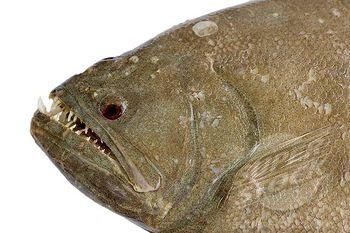
Psettodoidei: Spiny Turbots
This suborder contains one family (Psettodidae) and one genus, Psettodes. They differ from the rest of the flatfishes in a few respects. The dorsal fin does not extend onto the head, they have a large mouth full of barbed teeth, and the eyes may be on either the left or right side. The paper I used for my undergraduate research (Near, et al. 2012) actually found that the genetic data grouped this family away from the rest of the flatfishes, possibly indicating convergent evolution towards the flatfish body plan.
Pleuronectoidei
The dorsal fin extends at least to the eyes, and the dorsal and anal fins lack spines.
Citharidae: Largescale Flounders
This small family has few characteristics. Mainly, the nostril on the eyeless side is enlarged.
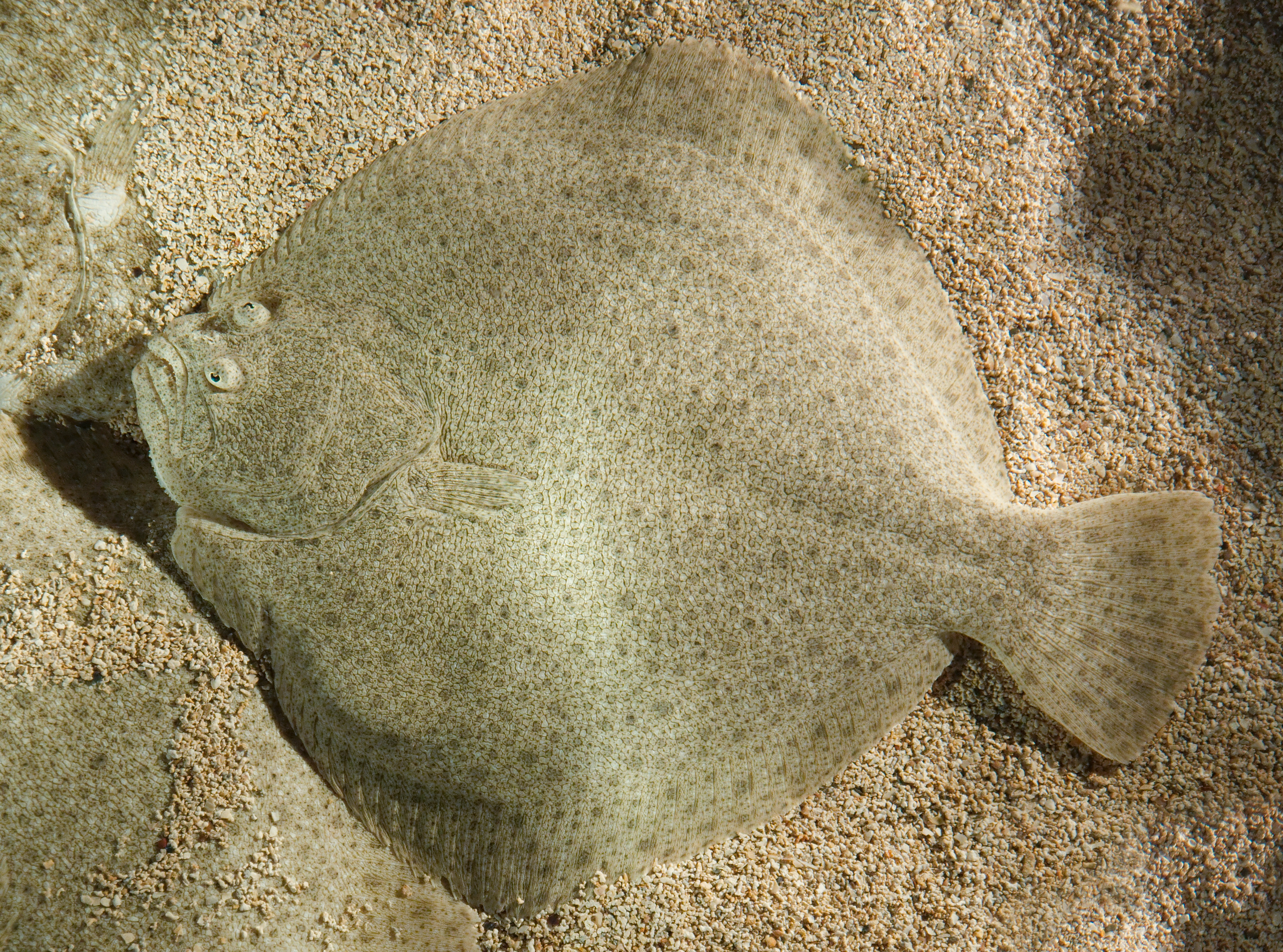
Scophthalmidae: Turbots
This family has their eyes on the left (sinestral) side and has a large mouth with a noticably large lower jaw. Some species may have an unusually tall body, giving them a circular or rhombus shape.
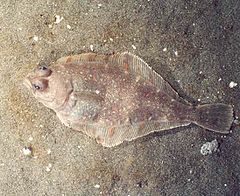
Paralichthyidae: Sand Flounders
These fishes have their eyes on the left side and usually have large teeth (they are also known as large-toothed flounders).
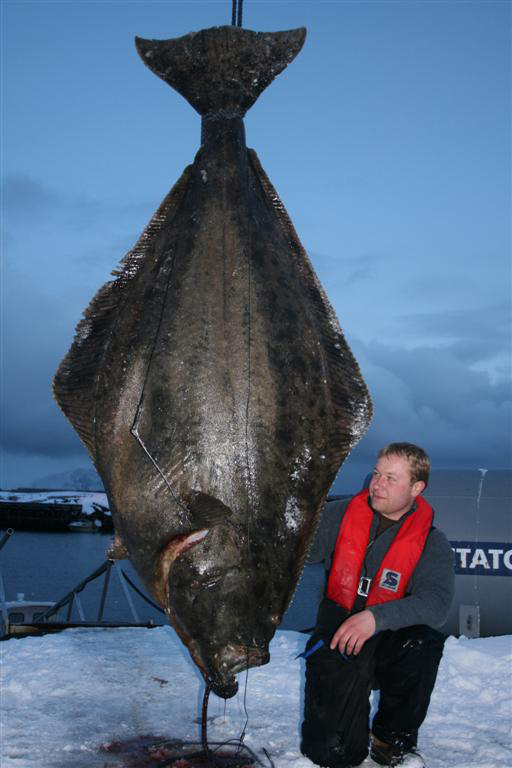
Pleuronectidae: Righteye Flounders
This family is aptly named, because the adults have their eyes on the right (dextral) side of the body. The dorsal fin extends in front of the eye. This family includes the Atlantic Halibut (Hippoglossus hippoglossus), an important food fish and the largest flatfish in the world, reaching over 4.5m and 300kg. I have grouped Paralichthodidae, Poecilopsettidae, and Rhombosoleidae in this family, even though Nelson gives them their own families, as their designation is uncertain.

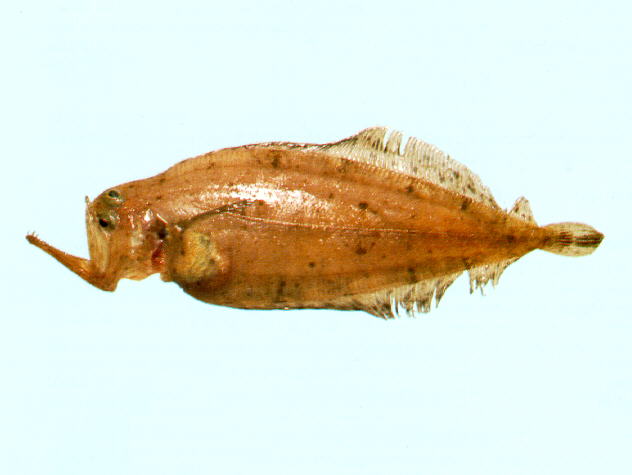
Bothidae: Lefteye Flounders
These flounders have their eyes on the left side, and supposedly have spines present on the face. There are a couple interesting members:
- Bothus: This genus contains fishes with relatively wide-set eyes, especially in the Wide-Eyed Flounder (Bothus podas). The eyes in these fishes are not only wide apart, but are also often set on short stalks.
- Crested Flounder (Lophonectes gallus): This flounder has elongated dorsal rays, giving it a large crest (hence the name).
- Wide-Mouthed Flounder (Kamoharaia megastoma): This flounder has a giant mouth, making it look like the child of a flounder and a gulper eel.
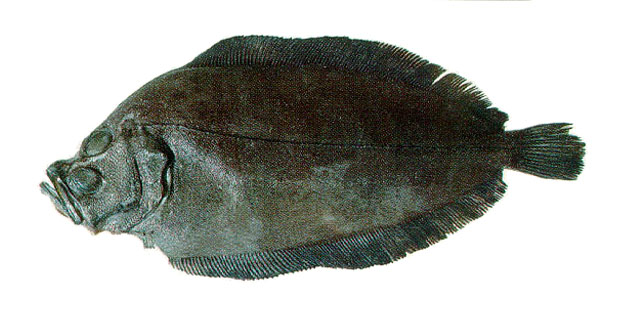
Achiropsettidae: Southern Flounders
This family has their eyes on the left side of the head. They have extremely compressed bodies, and completely lack pectoral fins as adults.
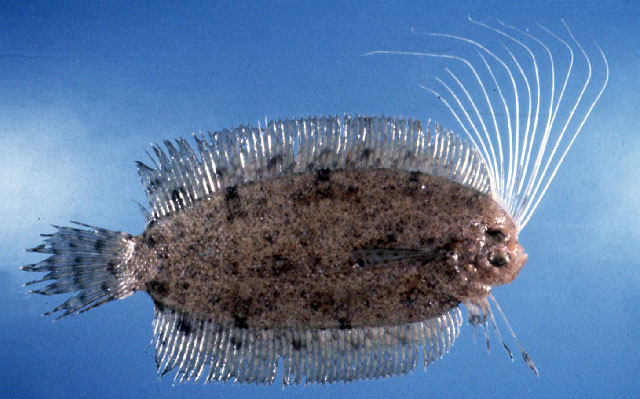
Samaridae: Crested Flounders
These appear to be right-eyed flounders (no one actually mentions it, but the pictures seem to indicate as such). Similarly to the crested flounder in Bothidae (see above), these fishes have elongated dorsal rays above their eyes, producing a crest.
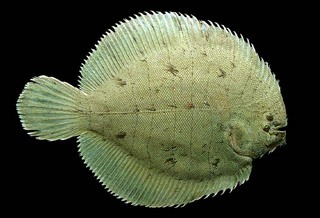
Achiridae: American Soles
These are right eyed flatfishes. They may lack pectoral fins, and have a fleshy lower lip on the eyed side.
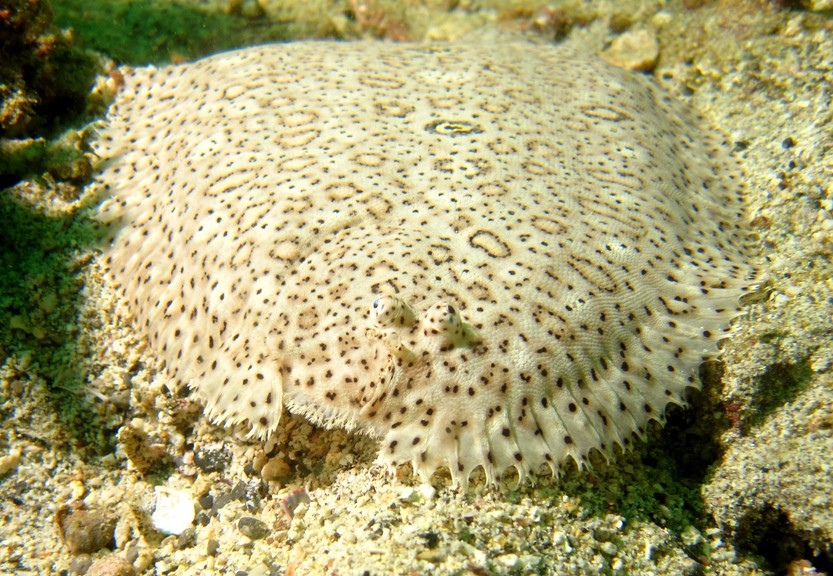
Soleidae: Soles
These right-eyed fishes have tiny pelvic fins that remain independent of the anal fin. The Moses Sole (Pardachirus marmoratus) can secrete a toxin from the fin bases that contains pardaxin. It causes cell lysis and is thought to be a predator deterrent.
Cynoglossidae: Tonguefishes
This family has their small eyes on the left side of the body. The caudal fin is continuous with the dorsal and anal fins. Some lack pectoral fins or lack the pelvic fin on the eyed side. Some species have a hooked snout or a curved mouth on the inferior side.